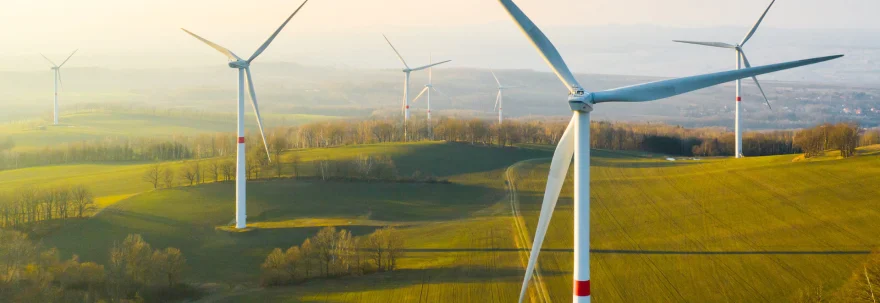Hello friends, as lately I am writing about renewable energy, I have been looking for information to learn more about what renewable energy is and to know if it is the same as clean energy. I found an article in the BBVA magazine that I liked and I would like to share it with you. It’s quite long so I’m going to translate it into 3 parts so that reading it doesn’t get boring.
Although they contribute to sustainability, clean energy and renewable energy are not the same. Clean energy would be those energy sources that pollute little, such as the nuclear, and renewables are those that are found in abundance in our environment, are renewed by nature itself and emit few pollutants, such as solar or biomass.
Energy is not created or destroyed; it is only transformed. The phrase that summarizes the law of conservation of energy has accompanied the history of the human being. Since we managed to handle fire, we have become more and more experts in transforming that energy to take advantage of it. We extract it from the wind and the sun, we create it through the force of water, we take advantage of the efforts of plants to store chemical energy and we look for it in the depths of the Earth.
But in the last two hundred years we have become especially dependent on a unique energy source, one that has been forming millions of years in the rocks, many meters below the earth’s surface. We have built a developed and technological world based on fossil fuels, only to end up realizing that everything we were burning has placed us facing one of the greatest challenges in our history (if not the greatest): climate change.
In search of solutions to the dependence on fossil fuels, we have found several alternatives. Along the way, we hear about green energy, clean energy, and renewable energy. But are they always the same?
Clean energy and renewable energy are not the same. In fact, if we are strict with the definition of clean energy, clean energy does not exist. The so-called green energies are those that do not emit any type of pollutant or have a negative impact on the environment during their production or consumption. Thus, wherever we look, not even the simplest uses of energy, such as harnessing the power of water with windmills, are completely clean.
For this reason, the definition is generally broadened and, as explained by the US Department of Energy, all that energy source that pollutes little and, above all, that emits few greenhouse gases, is included under the term clean greenhouse compared to fossil fuels. Among them, as we will see in the next section, there are both renewable energies and non-renewable energies.
Considering carbon dioxide (CO2) emissions throughout their life cycle, the cleanest energies are wind and nuclear, which generate four grams of CO2 for every kilowatt-hour of energy produced, and solar, with six grams per kilowatt-hour. By comparison, according to Carbon Brief data, coal, gas, oil, hydro and bioenergy are far more polluting. In 2020 alone, burning coal released 14 billion tons of CO2 into the atmosphere, oil emitted 12.2 billion, and gas 7.5 billion.
There are energies, such as nuclear, that are considered clean due to their low environmental and climate impact (as long as the plant does not suffer any accident), but they are not renewable, since they use a finite fuel (in this case, uranium and other radioactive materials). And it is that as the term itself indicates, renewable energies are those that are found in abundance in our environment, are renewed by nature itself and emit few pollutants or greenhouse gases during their production and consumption.
According to the definition given by the UN, the key element of renewable energies is that they are replenished at a higher rate than they are consumed. If oil or uranium are finite, the Sun will always illuminate the Earth (and the day it doesn’t, life will cease to be possible). This definition is what makes biomass energy and biofuels considered renewable, although part of the scientific community and the environmental movement disagree.
For many years, producing renewable energy was more expensive than burning coal and oil. However, according to data from the International Renewable Energy Agency (IRENA), in most countries the cost of solar and wind power is already lower than the older fossil option. In addition, renewables have become an important source of employment. One in two workers in the energy sector globally works with renewable energy, according to the latest report from the International Energy Agency (IEA).



